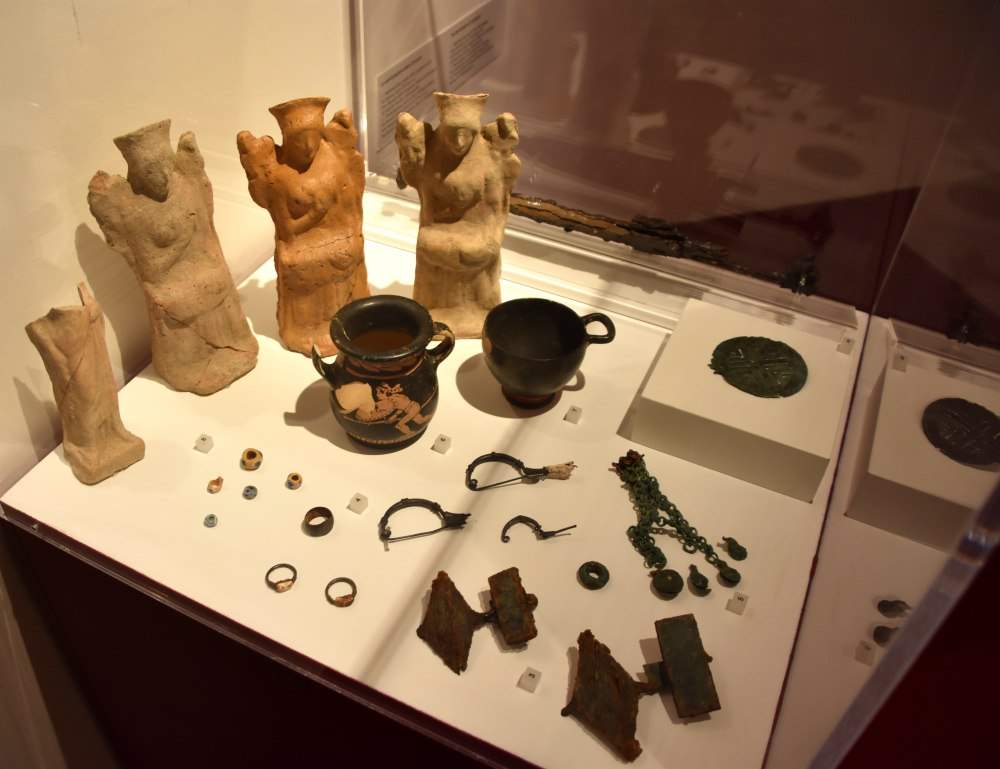Etruscan and multicultural Pompeii told in an exhibition from 800 artifacts in the Archaeological Park
From December 12, 2018, to May 2, 2019, a rich exhibition telling the story of Etruscan Pompeii is being held in the Archaeological Park of Pompeii, and to be exact in the spaces of the Palestra Grande. The exhibition, titled Pompeii and the Etruscans, is curated by Pompeii’s general director Massimo Osanna and Stéphane Verger, directeur d’études à l’École Pratique des Hautes Etudes in Paris, and is promoted by the Pompeii Archaeological Park with the collaboration of the National Archaeological Museum of Naples, the Polo Museale della Campania and the organization of Electa.
After the two chapters devoted to the city’s relations with the Egyptians (2016) and the Greeks (2017), this year’s new exhibition delves into the controversial and complex issue of “Campanian Etruria” and the relations and contaminations between the Etruscan, Greek and indigenous Campanian elites, at the center of which is Pompeii. The Pompeii exhibition complements the events promoted by the Archaeological Museum of Naples dedicated to the rediscovery of Etruscan civilization through antiquarian and collecting taste, scheduled from May 31, 2019. With about 800 artifacts from Italian and European museums, displayed in 13 rooms set up in the north portico of the Palestra grande, the exhibition allows an excursus from the earliest Etruscan influences in Campania before Pompeii, to the Etruscan new town of Pompeii in a multi-ethnic Campania, to its demise, and the memory of some Etruscan customs that were still preserved for some time.
Bronze, silver, terracotta, and ceramic materials from tombs, shrines, and habitation allow for multiple elements to be analyzed and compared to address the controversial dynamics of the Etruscan presence in Campania. The fulcrum of the exhibition is the findings that have come to light from recent excavations in the extra-urban sanctuary of the Iozzino Fund (among the main sanctuaries, besides that of Apollo and Athena. founded in Pompeii at the end of the 7th century B.C.), which have returned a large amount of material from the Archaic period, such as weapons and services for ritual libations with inscriptions in the Etruscan language. These materials flank, in the exhibition, those from other Etruscan cities in Campania, primarily Pontecagnano and Capua, where important places of worship are known to have similar characteristics to that of the Iozzino Fund.
Evidence of opulent princely tombs in which the most important members of great aristocratic families were buried are, on the other hand, the grave goods from Cumae’s Artiaco 104 tomb of a cosmopolitan prince (the remains of the deceased incinerated were laid in a silver cauldron, in the manner of the heroes described in Homer’s Iliad: “he ate and drank like a Greek, but wore Etruscan clothes and weapons and behaved like an Oriental king”), that of a princess from Montevetrano (tomb 74), near Pontecagnano, and that of the luxurious tomb of an Orientalizing prince from Latium (the Barberini tomb in Palestrina).
The dynamics of the encounters of cultures, the integrations between social groups, and the Mediterranean space as a place and theater of fluid cultures and fenced identities form the common thread of the exhibitions at the Palestra Grande in Pompeii, beginning with those that have focused on Egypt, Greece and now Etruria. Since the late 19th century, Campania appeared to historical and antiquarian science as a melting pot of presences. Archaeology, its apparatus of objects and philological tools, was entrusted with the arduous task of unraveling the skein of overlapping groups and ethnicities. The exhibition is in this sense, like its predecessors, a path of research that takes off from a program that has been active for several years now and articulated by excavation, study and documentation projects. What emerges from this operation is the idea of a multi-ethnic ancient Campanian territory and, therefore open to contamination and change, primary bases for the progress of a civilization. And Pompeii, which undoubtedly in the first centuries of its life was one of the structuring poles of the region, has now become a paradigm for investigating the shape of the archaic cities of Campania.
Access to the exhibition is included in the entrance fee to the excavations. For info on times and tickets, you can visit the official website of the Pompeii Archaeological Park.
 |
| Etruscan and multicultural Pompeii told in an exhibition from 800 artifacts in the Archaeological Park |
Warning: the translation into English of the original Italian article was created using automatic tools. We undertake to review all articles, but we do not guarantee the total absence of inaccuracies in the translation due to the program. You can find the original by clicking on the ITA button. If you find any mistake,please contact us.





























